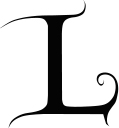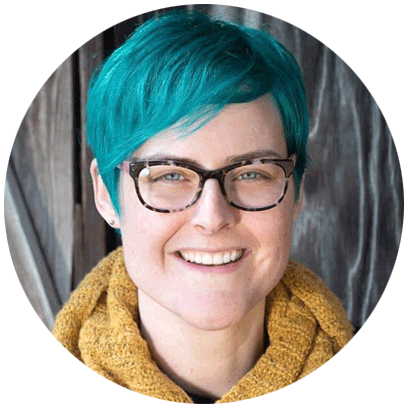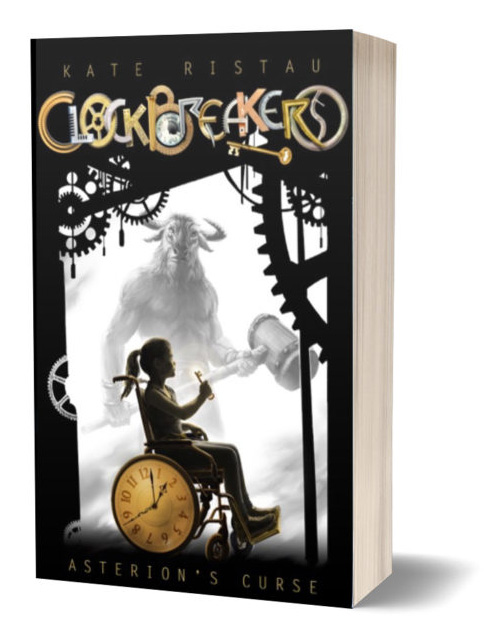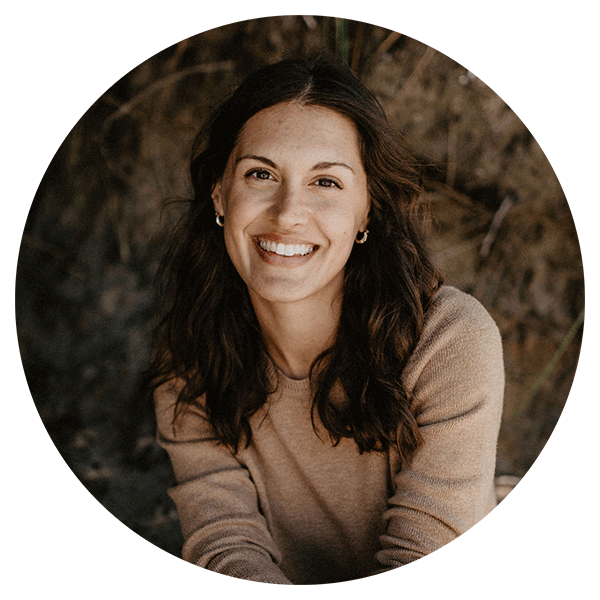
et’s step into another world, shall we? Fantasy fiction has a way of doing just that. From worldbuilding to wielding magic, this imagination-driven genre can seem both exciting and daunting to craft. Author, folklorist, speaker and executive director of Willamette Writers, Kate Ristau shares her approach on how to materialize a fantastical story.
Kate is the author of two middle grade series, Clockbreakers and Wylde Wings, and the young adult series, Shadow Girl. In her ideal world, magic and myth combine to create memorable stories with unforgettable characters. Until she finds that world, she’ll live in a house in Oregon, where they found a sword behind the water heater and fairies in the backyard.
WOW: I’m so excited to jump in. So tell me, where does fantasy storytelling begin for you? What comes first? Character? Plot? Worldbuilding?
Kate: Yeah, for me, the story begins differently each time. Sometimes, I have a character that I want to see in a particular scenario (like when I thought about Charlie riding her wheelchair back into an Ancient Greek myth in Clockbreakers). Other times, I have an idea of a scene (like when Áine’s mother is accused of being a changeling in Shadow Girl). From there, though, it’s all plot!
I’m not a worldbuilder; that’s where I struggle. Initially, I spend a lot of my early drafts working on scenes and characters—thinking about the story and what happens. Later, when I revise, I build out the world.
WOW: That makes sense. I’ve heard when it comes to fantasy and worldbuilding that it pays to be a planner. How important is pre-plotting?
Kate: I always think of story building like English class: you learn a lot of stuff, but you only really take away the things you need and the things that matter to you. For me, I start my stories with an idea or scenario or character, and then I start thinking. Then with a conception of where the story will go and what the narrative arc might look like, I dive in and all that disappears. I follow the threads of the story based on the needs and motivations of the characters.
Without detailed planning and outlining, I make a lot of mistakes—which means that my second drafts and third drafts (and ninth drafts) are always going to take me longer than someone who planned it all beforehand. But for me, the best part of the process is the discovery along the way, so I’ve had to learn how to cope with my wild drafts.
WOW: That’s good news for us non-planners. What sure-fire tips would you give those who write by the seats of their pants?
Kate: Yeah, so this isn’t in any particular order, but what first comes to mind is:
- When you get to the end of a draft, write up a reverse outline. It’s a good way to see the shape of your story, and it will help you consider what you might not need.
- If you get stuck, draw out the plot arc—the shape of what has happened in the story—and then draw the character arc beside it. Is your character responding to events in the story, or are they static or changing on a whim? Your character development should be linked to events in the plot of your story. In your revisions, make sure you are making those connections.
- Your conflict develops in response to your characters. If you are in the muddy middle and can’t see a way out, write down all of your characters—including what motivates them and what they need. Consider, are you meeting their needs too quickly? Is their motivation unclear?
- As you write, ground your story with real, concrete objects. You can use those objects to reveal character. How does your character interact/respond to those objects? Sometimes, if I am thinking too many big thoughts about what my character needs and desires, I scale it down to the moment they are in and what they are holding in their hands.
WOW: Such great takeaways! Speaking of drawing out the plot arc, are you consciously thinking of markers you want to hit as you write?
Kate: I mean I have a sense of the shape of where I want the story to go. I do a lot of scenes, no transition and no setting. Writing Excuses podcast talks about the Scene and Sequel format. Scenes are where things are happening, and Sequel is the plot and the movement between scenes. So, I mark the transitional sections with an arrow sign pointing up; and then if it’s a scene, I put an arrow sign pointing down.
WOW: That seems like a great way to indicate where you’re at in the story and staying organized. How would you say your craft changes in the second draft from the first draft?
Kate: Yeah, so when I’m down in the scene, I’m following my characters, and I don’t pull out much for that omniscient perspective like I do when I’m revising. I think about the first draft as the draft for myself, where I’m following the story and learning to understand the characters. The second draft is when I let the reader in. I think a lot about what the readers need and what they’d want from a part of the story. From there, I work on the setting, transitions, and adding in the emotions.

“One way to suspend disbelief is to send your character into the situation with the same disbeliefs as your reader, which is a way for readers to connect and understand. So in a sense, it’s not even about suspending disbelief, but acknowledging that it’s there.”
WOW: How do you build a marriage between the physical and the supernatural? Are there any tried and true methods to which help suspend a reader’s disbelief in fantasy fiction?
Kate: Ok, the first thing that comes to mind is an example in my book, Shadow Queene. One of the main characters is going to Fairy Hell, and she is not prepared for the situation at all. She has no weapons; the only thing she has is an attitude and an iPhone—which is something most of us can relate to.
One way to suspend disbelief is to send your character into the situation with the same disbeliefs as your reader, which is a way for readers to connect and understand. So in a sense, it’s not even about suspending disbelief, but acknowledging that it’s there. You see that a lot in fantasy; for instance, take Harry Potter or Frodo, two different characters who are coming into something new or something they don’t understand, and we are right there with them—therefore, we can experience the unknowns together, share their doubts, and see it all through their eyes while encountering their emotions along the way.
WOW: I love that: acknowledging the disbelief. I imagine that fantasy requires a lot of imagination. Are there any specific things you do to help you cultivate your imagination?
Kate: I like to get into my silly self, draw, get outside, play...doing creative things outside of writing, too. I enjoy things that help me look at the world differently: so yeah, movies and TV shows, reading comic books and graphic novels—anything that helps you think of story in a different way.
WOW: In what ways do you work to develop/enhance your skills towards your craft?
Kate: I read a lot other people’s work because you’ll see quickly what they are doing well at; and it’s not just published work, but what other writers are working on and drafting. I also like going to workshops. I’m currently not in the mode of critique groups, mainly because I’m working at a faster pace now, although I do think they are helpful. I do a lot of beta reading and connecting with other writers, sending them half bits, and chatting through each other’s story problems.
WOW: Yeah, story problems. So how do you overcome getting hung up on wording that doesn’t fit the culture you’ve created? For example, do you ever write up character dialogue that doesn’t seem natural to the characters?
Kate: In the first draft, I just let it happen. In the second draft, I really think about that character and how they would talk and react in the situation and if it’s authentic to who they are and who they are becoming.
Shadow Girl and Shadow Queene take place partly in Ireland, so I draw a few phrases that give a sense that it is Ireland; but I don’t get totally into the dialect because it can pull the reader so far out of the character and what I want them to experience. However, train your reader early on; when a big scene or emotional moment matters for the character to respond with a phrase, your reader won’t get stuck.

“Charlie rolled her wheelchair into Ancient Greece and encountered a world that wasn’t ready for her. As readers, it’s important for us to see her perspective and how many characters like her have not been fairly represented (or represented at all) in stories throughout the centuries. As storytellers, we have the power to shift that narrative.”
WOW: In what ways do you use tales told for centuries to put a spin on your own work?
Kate: I often pull in pieces of older stories or myths into my work. As a folklorist, I’ve studied narrative, and the stories that last are the ones that pull at us, that touch something deep inside us. They resonate. So, for me, drawing on those ideas is a way of connecting with my reader. But I also love to challenge and upend those stories and themes. I like to rewrite stories or shine a light on universal themes and challenge my readers to think about them. There is a reason why stories last—but, honestly, not all stories need to last. As people, we use stories to help us understand our world, to entertain ourselves, and to connect with each other. Those stories change as our needs, hopes, and dreams change across cultures and time. For example, in Clockbreakers, Charlie rolled her wheelchair into Ancient Greece and encountered a world that wasn’t ready for her. As readers, it’s important for us to see her perspective and how many characters like her have not been fairly represented (or represented at all) in stories throughout the centuries. As storytellers, we have the power to shift that narrative.
WOW: When it comes to wielding magic, are there rules? Is there a system, or is anything permissible?
Kate: Magic has to have rules, no matter how simple or complicated. I think the biggest thing I’ve learned, though, is that magic should also have a cost—you should put limits on your magic. If magic in your story is unlimited, your story can fall apart because your characters can use magic to solve all of their problems. Magic with a cost makes for a more compelling story because your protagonists have to make a choice when using their magic, and choices can create more tension.
WOW: How do you determine the cost?
Kate: First, I look at my character’s motivations and needs. The character’s emotions should change in response to what is happening in the scene. So think about how the character is coming into a situation, and then how you want that character to come out on the other end of it. Another example is the idea of putting your characters up in a tree, and then you throw rocks at them, making it a challenge. When it comes to magic, make the cost a physical one. It could be that doing magic is physically exhausting. You can’t just magic your way out of every problem, and ultimately, the cost should be what’s going to lead the character to the most growth.
WOW: As someone who wears many hats, how big of a priority is writing in your day-to-day?
Kate: It is a huge priority. I used to drop my son off at school, then write for an hour before tackling any other type of work. But right now with everything being so complicated, I’m getting up early again. I’m usually up at 5:45 a.m. For me, I have this thing in my head that I need to do my writing first and focus on that. So even if I have emails or other things to do, I don’t do it until the actual family stuff starts—when my son’s getting up and my husband is making his coffee.
WOW: So, you’re disciplined.
Kate: Well, yeah. For a year, I did 500 words or 30 minutes, whatever came first. I did that every day; and some days, 500 words came easy, and I wrote for longer. Other days, 500 words felt like pulling teeth, and I also wrote for longer...but what I got out of doing that every day was that it made it easier to get into the creation stage. If you really want to get nerdy about it, author Eric Witchy has researched brain hacks, ways to train your brain’s beta cells to signal your brain’s creativity at a specific time. It’s great, especially when you have a lot of life happening around you, and your time is limited.

“Tell the story you want to tell. You don’t have to tell the story others are telling or use the characters others are using; tell the one that matters to you.”
WOW: What was your favorite piece of advice as an emerging writer, and what advice would you give now as a seasoned one?
Kate: I still do like the writing every day thing because it gets you into habit, and I think that’s important. I got that advice over and over early on, and I use to think, whatever. But when I actually did it, the more joyful the experience became; and now it’s something I can take pride in.
As a seasoned writer, I’d say tell the story you want to tell. You don’t have to tell the story others are telling or use the characters others are using; tell the one that matters to you.
WOW: I feel like that can’t be reinstated enough. We all need that reminder. Where can people find you and your books?
Kate: They can find me at kateristau.com. My books are online in all the usual places, including local independent bookstores! You can order a signed and personalized copy of my books here.
WOW: Thanks so much, Kate, for taking the time to share with us your tips and experience in crafting fantasy fiction. I believe a lot of what you’ve shared can help writers of any genre. I’m excited to look at my own work anew with your insightful approach.

Maja Scheler is an adventurer and writer based out of the Pacific Northwest. When she is not writing, Maja can be found exploring the great outdoors with her husband and four children. Follow her words and adventures on instagram @majakscheler.